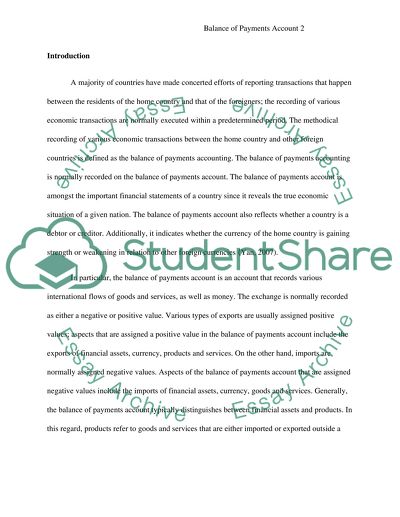Cite this document
(Balance of Payments Account Essay Example | Topics and Well Written Essays - 2750 words - 2, n.d.)
Balance of Payments Account Essay Example | Topics and Well Written Essays - 2750 words - 2. Retrieved from https://studentshare.org/finance-accounting/1632664-discuss-in-detail-the-components-of-the-balance-of-payments-account-does-the-balance-of-payments-account-balance-if-the-account-is-in-dis-equilibrium-what-can-be-done-to-bring-the-account-into-balance-explain-your-answer-with-relevant-examples-and-argu
Balance of Payments Account Essay Example | Topics and Well Written Essays - 2750 words - 2. Retrieved from https://studentshare.org/finance-accounting/1632664-discuss-in-detail-the-components-of-the-balance-of-payments-account-does-the-balance-of-payments-account-balance-if-the-account-is-in-dis-equilibrium-what-can-be-done-to-bring-the-account-into-balance-explain-your-answer-with-relevant-examples-and-argu
(Balance of Payments Account Essay Example | Topics and Well Written Essays - 2750 Words - 2)
Balance of Payments Account Essay Example | Topics and Well Written Essays - 2750 Words - 2. https://studentshare.org/finance-accounting/1632664-discuss-in-detail-the-components-of-the-balance-of-payments-account-does-the-balance-of-payments-account-balance-if-the-account-is-in-dis-equilibrium-what-can-be-done-to-bring-the-account-into-balance-explain-your-answer-with-relevant-examples-and-argu.
Balance of Payments Account Essay Example | Topics and Well Written Essays - 2750 Words - 2. https://studentshare.org/finance-accounting/1632664-discuss-in-detail-the-components-of-the-balance-of-payments-account-does-the-balance-of-payments-account-balance-if-the-account-is-in-dis-equilibrium-what-can-be-done-to-bring-the-account-into-balance-explain-your-answer-with-relevant-examples-and-argu.
“Balance of Payments Account Essay Example | Topics and Well Written Essays - 2750 Words - 2”, n.d. https://studentshare.org/finance-accounting/1632664-discuss-in-detail-the-components-of-the-balance-of-payments-account-does-the-balance-of-payments-account-balance-if-the-account-is-in-dis-equilibrium-what-can-be-done-to-bring-the-account-into-balance-explain-your-answer-with-relevant-examples-and-argu.


